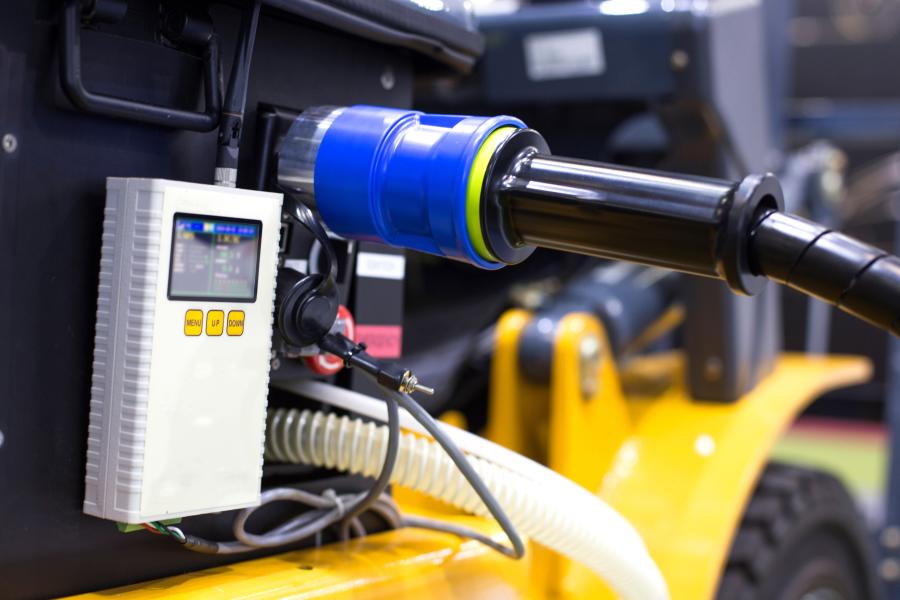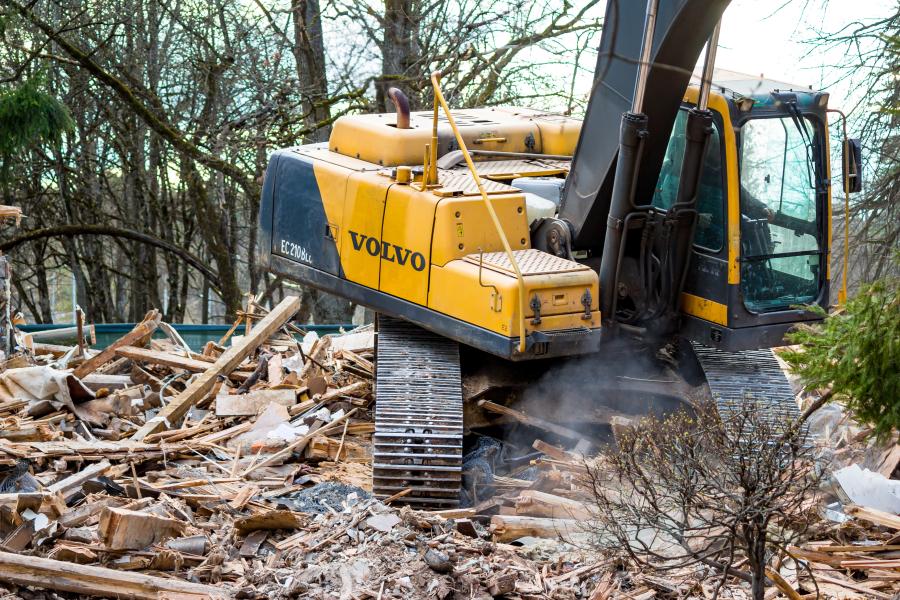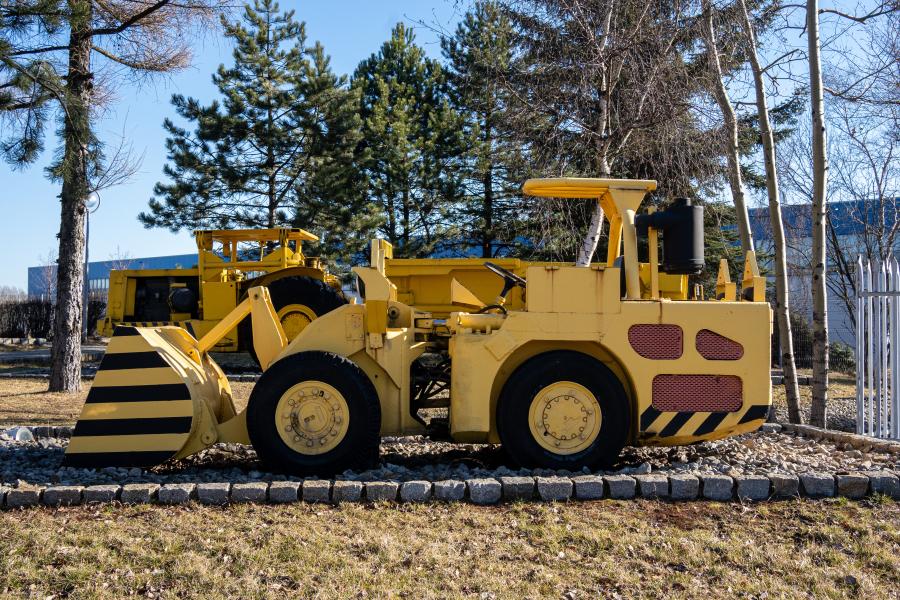The arrival of wireless jobsite charging will enhance the opportunity to charge a machine during idle times. The operator would top it off like a cell phone.
Cost, availability and operation have limited the proliferation of electric heavy construction equipment. Compact machines powered by electricity have been more visible on job sites over the past six years, whereas big rigs have presented more of a challenge for manufacturers to roll out. That hasn't stopped progress, though.
The bottom line, admittedly, is it's proven costly to invest in electric construction machines.
Choices have been limited for fleet managers on a budget. And frequent battery recharging has made the technology less than efficient.
"Using electric heavy machinery has numerous benefits, including a reduction in fumes, noise, emissions, energy costs and operating costs," according to Autodesk's Redshift.
A long list of machine makers has unveiled new models this year, and it's expected more manufacturers will be rolling out electric heavy machines in time for ConExpo-Con/AGG 2023.
RedShift believes construction companies can reap additional benefits from ditching diesel engines.
Studies show that the larger upfront cost of going electric is offset by more years of dependable service, the organization noted.
"Recharging replaces refueling, typically a dirty job on big machines. And less noise and pollution can yield longer construction hours," said RedShift.
As battery power becomes cheaper, stronger and more dependable, there aren't as many excuses against using electric heavy machinery, said Stefan Schneider, managing director of machinery maker SUNCAR HK AG.
"Some machines that have very high fuel consumption are hard to equip with batteries to work a full operation day," he told RedShift. "But it's possible to run most of the time from the grid with a cable."
Making the Switch
According to RedShift, it's also possible to convert from electric/hydraulic to all-electric operations by replacing hydraulics with electric actuators.
The actuators are operated by complex computer coding that mimics traditional hydraulic movement.
"Many companies currently have all-electric prototypes in the field for testing, suggesting more of these options will soon be for sale and on the job."
And many of these companies are using the trucking and transportation sectors as their integration models.
RedShift found that all-electric construction runs parallel with initiatives to electrify trucking and transportation, another big source of carbon emissions.
The biggest single source of transportation emissions in the United States is from freight movement, mostly done by large trucks.
The California State Air Resource Board has mandated all-electric trucking by 2045.
California, Oregon and Washington support the West Coast Clean Transit Corridor Initiative.
The initiative wants to see a network of electric vehicle charging stations for freight haulers along Interstate 5 from Canada to Mexico.
Electric Making Inroads
The Association of Equipment Manufacturers (AEM) says compact machines have gained the most traction in the movement to electric power.
In fact, most of the electric construction equipment models commercially available are compact machines.
"We started with the smaller machines because they are typically running only a few hours a day," said Lars Arnold, electromobility product manager of Volvo CE.
That said, both manufacturers and contractors believe large machines are coming soon.
Volvo CE is testing a 20-ton crawler excavator powered by a 600-volt charging system. Availability is expected in 2024.
"The 48-volt battery packs and the duty cycles of compact machines are well matched," said Ray Gallant, vice president of product management and productivity of Volvo.
From a technological standpoint, electric-powered compact equipment was one of the easiest to go after, said Chris Lucas, product manager of excavators, JCB North America.
Thomas Jaejin Lee, director of product management, Doosan Infracore North America, said, "We plan to make a shift to battery-type excavators for 10-metric-ton and below.
Though electric-powered mining, demolition, aerial lift and industrial forklift machines have been on the market for a while, the technology is quickly mainstreaming to general construction.
Electric construction machines were a trade show curiosity as little as six years ago, according to AEM.
"Now compact equipment manufacturers expect to be questioned on whether they are working on an electric model," said the association.
AEM notes that while some contractors are natural early adopters, most are concerned with practicalities.
Adoption Challenges
The three big barriers to electric machines, the association believes, are initial cost, run time per charge and charging time.
Diesel prices and carbon footprint also might play a role in the decision-making process.
Kevin Forestell, president of Dozr, said most machines have a six- to eight-hour run time on a single charge.
"However, the time that charge takes can differ depending on the vehicle and charging source," he said.
AEM reports Volvo's new compact wheel loader with a 40 kW battery pack has a runtime of up to eight hours and takes six hours to fully charge.
"We know significant improvements will be made in this arena as technology and charging infrastructure continues to develop," said Arnold.
Charging your machine may pull the same power used for running major household appliances.
For instance, a 240-volt, 32-amp Level 2 AC-charging setup is what's recommended by Volvo, according to AEM.
It's the same power used for running your water heater and stove in your home.
The machines can be charged with a standard 120-volt outlet, but longer charging times make it impractical for construction.
"Insufficient infrastructure can be an issue for charging equipment, particularly at a more rural site or if there are several pieces of equipment to be charged," said Forestell.
The solar charger Volvo offers is an off-grid, no-connection, free-standing option with a battery pack.
The company also is working on a rapid charger that would reduce time to just an hour or two.
"This unit isn't off-grid, so it would need to be wired into a 480-volt, three-phase power grid at the location where you want to charge," said Arnold.
Performance is another crucial factor in the decision to move to electric construction equipment.
Arnold maintains Volvo's electric machines have comparable or better power than diesel units.
"Operators are surprised to experience the immediate torque and equal — or better — power," he said.
Forestell agrees: "Many of the electric models coming out enable instant power and peak torque," he said.
The cost of batteries these days means an electric machine typically costs two to three times a comparable diesel machine.
An ROI study by JCB showed a 50 percent return within three to five years, Lucas said.
"There are no maintenance costs with electric machines," he added. "All you're doing is charging the machine and filling up the hydraulic fluids."
Electric machine prices will drop as component costs fall with increasing volume, believes Joel Honeyman of Doosan Bobcat.
AEM advises contractors against comparing run times on a fully charged electric machine with a full tank on diesel units. It doesn't show the whole picture, said association subject-matter experts.
"An electric machine behaves differently than a diesel machine," Honeyman explained.
For one thing, when you let off the joysticks of an electric machine, there's no idle, he said.
"An operator can get a day or more of productive work out of it because they're typically not running the machine eight continuous hours a day."
If the contractor's goal is to reach zero emissions, it makes no sense to charge your electric machine with a diesel generator, said AEM experts.
Volvo's Gallant said the company is paying attention to the charging infrastructure.
"How do we get the power out to the job sites and how do the job sites have to evolve?"
JCB has come out with a universal fast charger, designed to charge the company's fleet of E-Tech machines.
"We always try to make sure we include multiple charging options," said Rebecca Yates, senior product manager of material handling, JCB North America.
To be effective, temporary electric jobsite power must be deployed rapidly without permitting or site prep requirements, said Desmond Wheatley, CEO of Beam Global.
He believes contractors and equipment owners must reset their way of thinking about electric charging. While fast chargers seem attractive, their use is driven by what happens at the fuel pump.
"If a machine has access to a charger during idle times, you can just top it off like you do with your cell phone," he said. "You just charge it whenever you're not using it and not wait until it's empty."
The arrival of wireless jobsite charging will boost this approach, Wheatly believes.
With a ruggedized receiver, instead of being plugged up the construction machine could charge while it's parked over a charging pad.
"The wiring is already basically in place, you've just got to extend it to the underside of the vehicle," he said.
Whatever their eventual form, electric charging systems will likely be primarily rental items, Wheatley said.
"Widespread adoption of electric equipment starts when it becomes economically viable," Gallant said. "But everyone seems to be willing to see where it develops, and that's encouraging."
As RedShift said, construction sites are messy, but the entire ecosystem needs to be electrified for the industry to achieve true emissions reduction.
Luckily, the options are growing for electric-powered heavy machinery that can do the hard but necessary work of building a cleaner future. CEG
Lucy Perry
Lucy Perry has 30 years of experience covering the U.S. construction industry. She has served as Editor of paving and lifting magazines, and has created content for many national and international construction trade publications. A native of Baton Rouge, Louisiana, she has a Journalism degree from Louisiana State University, and is an avid fan of all LSU sports. She resides in Kansas City, Missouri, with her husband, who has turned her into a major fan of the NFL Kansas City Chiefs. When she's not chasing after Lucy, their dachshund, Lucy likes to create mixed-media art.
Read more from Lucy Perry here.
Today's top stories


















